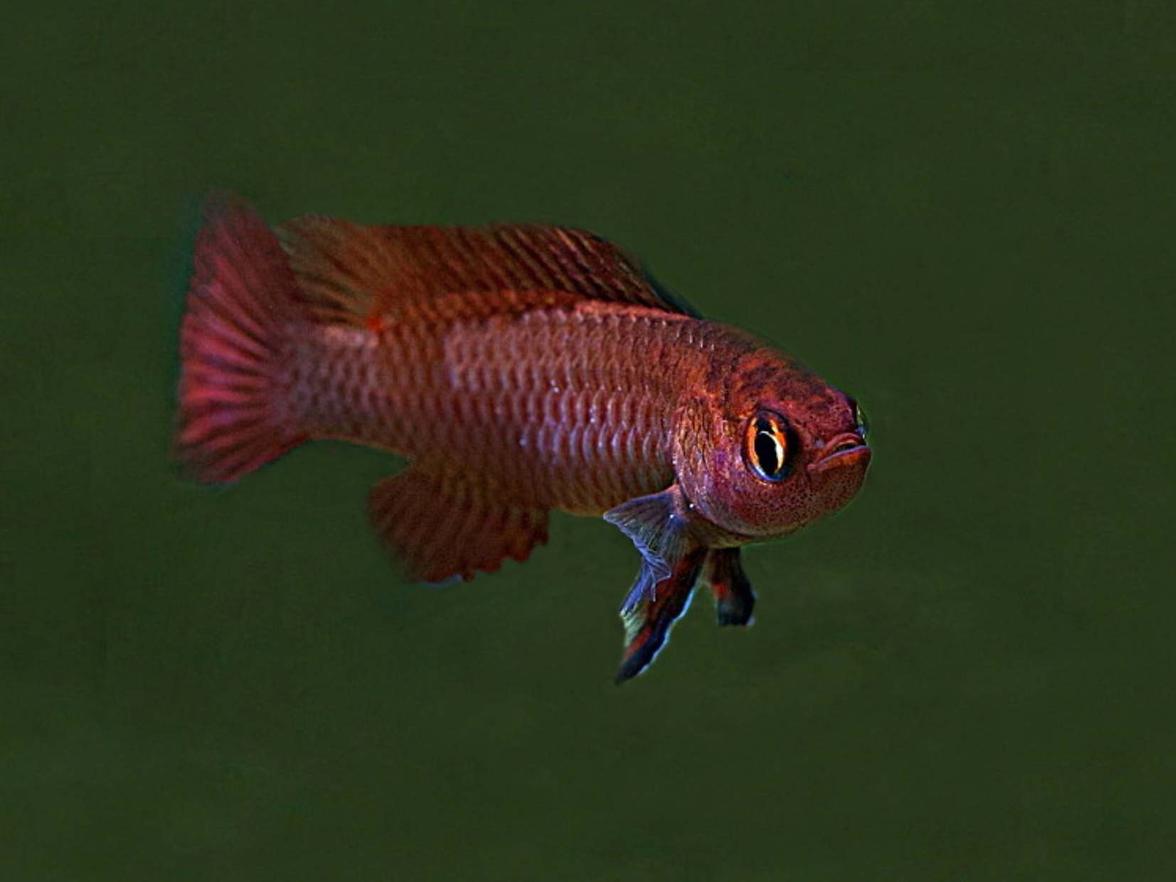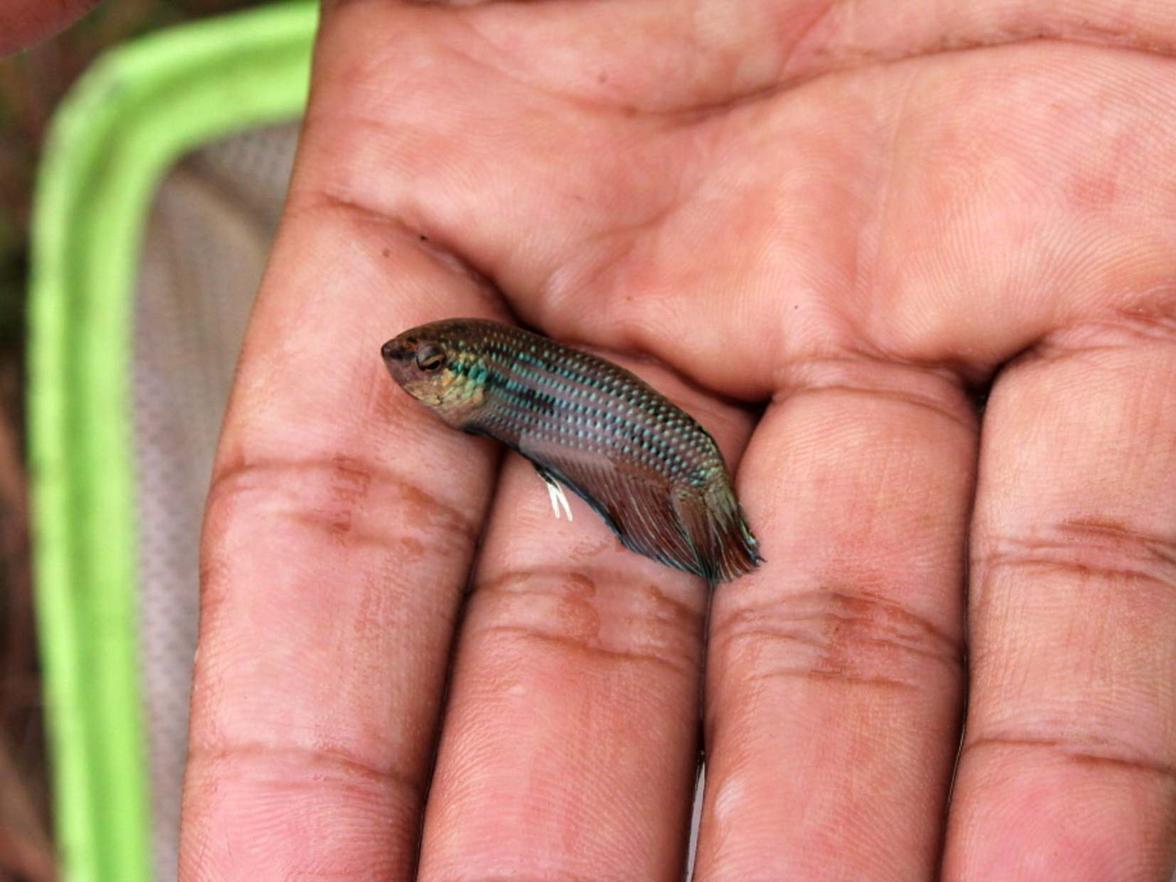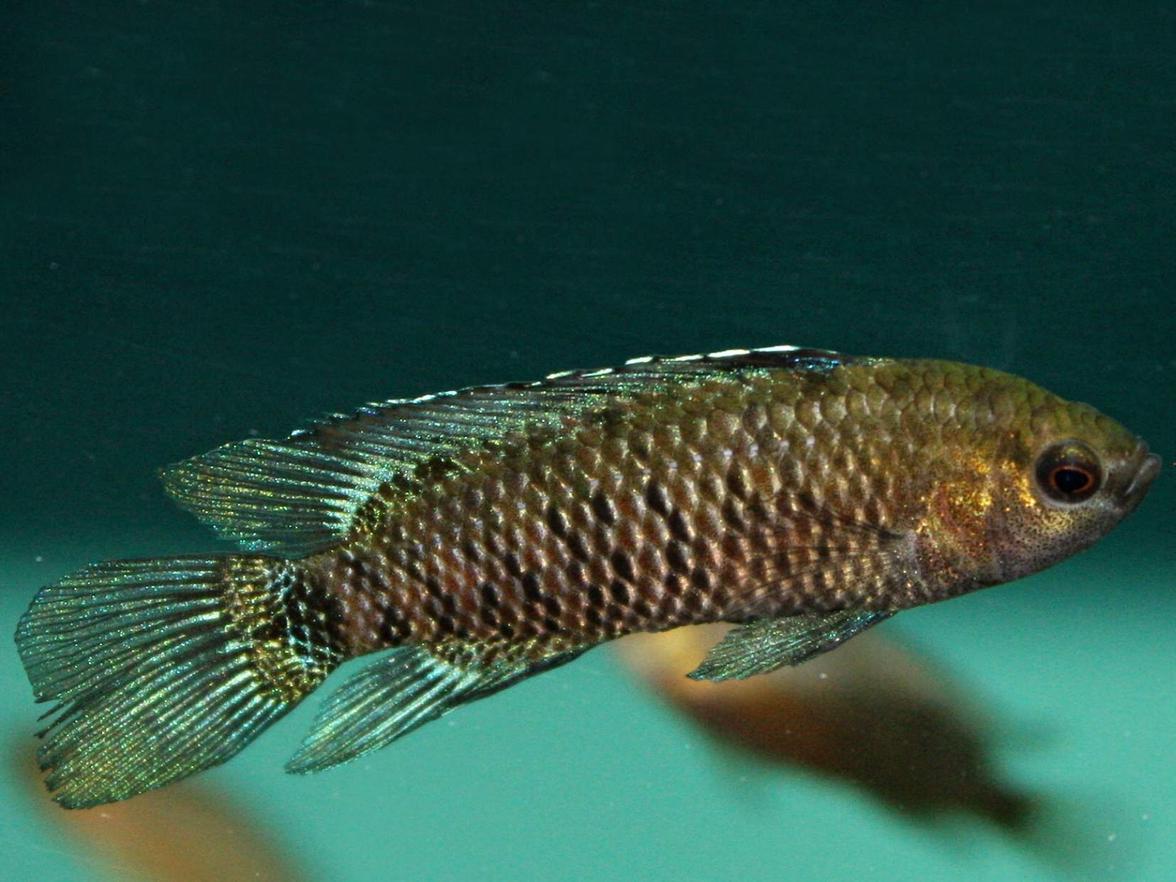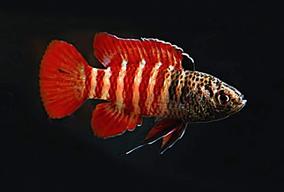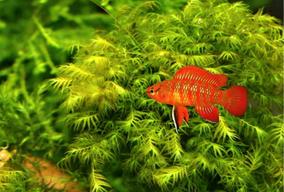Family Badidae, known among aquarists primarily for the genera Badis and Dario, includes small but exceptionally interesting species of fish that have earned a reputation as the "chameleons of aquarium fish." Their variable coloration, calm nature, and intriguing parental behavior make them a fascinating subject for observation and breeding. The breeding of gobies (family Badidae) is often surrounded by myths about the necessity of pairing them in small tanks.
Barb Badidae
Barb Badidae includes two genera: Badis and Dario. From these genera, I previously kept Badis badis (blue-spotted barb) from India. These fish can grow up to 8 cm in the wild. In an aquarium, and also in my breeding, it was less.
Males measure 6-7 cm and females are about 1 cm smaller. Distinguishing between sexes is not complicated. Males have a somewhat curved body, while females are less colorful and have a distinctly rounded belly, especially during breeding. These fish often change their coloration from dark blue to completely light. German aquarists call them "chameleon fish". This addresses the topic overall.
The second species was Badis ruber (formerly Badis badis burmanicus) from Myanmar (formerly Burma), hence burmanicus. In the wild, it also grows up to 8 cm. In the aquarium, it is similar to Badis badis. This fish is more colorful, with red stripes and spots. The distinction between sexes is the same. Males are larger and more colorful than females. They are not curved like Badis badis.
Breeding and rearing
Breeding and rearing are the same for both species. Therefore, I will limit myself to the species Badis ruber. Czech aquarists keep these fish only occasionally and usually in pairs in small tanks. The main reason they often cite is the larger number of bred fish. This has not been confirmed in my breeding. In small tanks, the fish do not reach the proper size. My fish were given to me at a meeting of the International Organization of Labyrinth Fish Breeders (IGL – Internationale Gemeinschaft für Labyrintfische) by Horst Linke. He imported the fish, possibly even caught them in Myanmar.
First breeding of Badis ruber
I obtained the first breeding after catching them in the wild. Thus, the first filial generation. The water temperature for breeding and rearing is 24°C - 26°C. In my conditions, it was Jilemnice tap water with a hardness of 3-4 °dH.
The ideal food is live. Mosquito larvae and then brine shrimp larvae, occasionally live infusoria. Crustaceans of the genus Daphnia and Cyclops. In emergencies, frozen food can also be given. I have never fed them dead food.
I placed 7 fish in a 60-liter tank. The bottom was sandy. Several clumps of Microsorum pteropus, a sponge filter, and various ceramic and plastic hiding places. From the breeding of these fish, I later selected ten individuals for further breeding. Under the same conditions, the fish grew to reproductive size in about ten months. I had 4 males and 6 females from these fish. The dominant male occupied a hiding place made from a plastic tube glued to the glass wall. He guarded the anchored tube with a diameter of 3 cm. The other males hid. Their coloration resembled that of the females. If any tried to show color, he was immediately attacked.
This dominant male gradually spawned with all six females. Spawning lasted nearly two days. The fish spawn like cichlids, gouramis, or Bettas. The spawning occurred in the tube. The male embraces the female and turns her belly up. At the moment of spawning, the fish release their reproductive products. The eggs sink to the bottom, and spawning is repeated many times.
For barbs, spawning with multiple females is typical. There were many eggs. After spawning, the male also cares for the eggs.
Raising the fry
After the fry started to swim, I removed all adult fish. I still kept in mind the supposed reason for paired breeding: Raising a larger number of young fish.
After three days, the eggs hatch, and after another 4 days, they begin to swim. They accept small live food: brine shrimp nauplii or filtered nauplii of water crustaceans.
The fry grow quite well with good feeding, hiding among the stones and in the plants. In case of food shortages, stronger individuals may attack weaker ones. I decided to refute the nonsensical thesis about breeding in pairs. Aquarists sometimes adopt certain breeding and rearing methods and do not consider other possibilities.
The fish quickly filled the tank, and a large number required relocation to a larger tank. My time had come. I counted during the transfer - how many fish had been successfully bred. At number 450, inherent laziness won, and I simply caught the rest of the fish and moved them to a 180-liter tank.
As the fish grew, this tank also became small. After I started selling the fish, I recorded the numbers. A total of 850 fish were sold, and some of my poorly kept ones died. Almost 1000 fry certainly swam. I must also mention that observing these barbs is very captivating.
Dario hysginon and Dario dario
Another species from this family was Dario dario and Dario hysginon. These are small and very attractively colored fish. Their body shape and behavior remind one of their larger relatives from the genus Badis. They are found in India, Myanmar, Bengal, Bangladesh, and Assam.
Dario hysginon (Kulander and Britz 2002). I obtained these fish in exchange for Dario dario from the aquarist legend RNDr. Stanislav Frank. The fish grow to 2.5 cm in the aquarium, with females being smaller. They are brick-red in color. The first two rays of the dorsal and pectoral fins are black. Breeding and rearing are the same as for the well-known Dario dario.
Breeding and rearing of Dario dario
Dario dario (formerly Badis scarlet) Hamilton, 1822. They originate from South Asia, Bangladesh, and Assam. After 2000, these fish attracted considerable interest from aquarists. They are extraordinarily attractively colored: Males are red with blue spots and stripes. The coloration of females is less intense. The sexes can be easily distinguished by size and color, and males are very active.
I fed them live food. Nauplii of Artemia salina, small filtered plankton, small larvae of the mosquito Culex pipiens. It is possible to use frozen food as well.
I obtained my first fish from an unnamed wholesaler around 2002-3. I don’t remember exactly. They were in very poor health and died after a short time.
I mentioned to friends in Germany about getting these fish. In 2004, at an IGL meeting (see above) in Riesa, my very good friend Hans Jürgen Ende gifted me two groups of these fish. Always one male and four females. He very emphatically warned me that it is not possible to keep two males in one tank. He labeled group breeding, which he prepared for me, as ideal.
I did not have, as usual, free 2 tanks and also wondered what advice I would receive. In a sixty-liter tank completely filled with plants Microsorum pteropus, I placed both groups.
Spawning, successful rearing, and water influence
As Hans Jürgen said, so it happened. After four days, I had eight females but only one male. The fish lived happily. The male swam nervously from one female to another.
The tank was placed on the top shelf of a stand with a transparent bottom. As always, I didn’t have enough time to observe them. JOne day, while cleaning the aquarium on the floor below, I noticed some movement. I took a flashlight and magnifying glass, and to my surprise, in the tank about 2 cm above the bottom swam about 100 small. They were already about 3 mm long and swam with their heads tilted upwards. Their bodies were almost transparent, only the eye formed a black circle. They fed themselves with the food provided to the adult fish.
Dario spawn like labyrinth fish. The male embraces the female, turning her belly up. After releasing eggs, they are immediately fertilized. The eggs are placed in the curled leaves of plants. In water at a temperature of 26°C, they hatch in three days, and after 4-5 days, they swim. The male guards the eggs. Adult fish do not notice the fry. One male evidently spawned with all the females. Badids are genetically predisposed to spawn this way.
I still must write that it is really not possible to keep more than one male in a tank. They are extraordinarily aggressive towards males of their own kind. I certainly also cannot recommend small aquariums and breeding in pairs. The male exerts extraordinary pressure on the female, and during constant intimidation, the female can easily die. I also want to mention information from Dr. Frank, who was unsuccessful in breeding these fish. After he analyzed the water in which I had given him these fish, he recorded success. About a month later, his typical voice rang on the phone, and he told me that there were plenty of fish. The problem was the high sulfate hardness of his tap water. Until then, I had known nothing about such hardness. My good fortune was that Jilemnice water was suitable for breeding and rearing.
I still remember fondly my friendship with this extraordinary aquarist. His information gleaned from countless conversations simply could not be obtained in a better way. In the magazine Akvárium Terárium, a detailed article by RNDr. Frank was published, and equally perfect with beautiful photographs of spawning was published by MUDr. Karel Zahrádka in the magazine Akva tera fórum in the 2005 yearbook. I have no experiences or information regarding breeding in communal aquariums. Therefore, I cannot recommend or refute it. If there are enthusiasts for breeding the family Badidae, I would be happy to share my experiences with you.
Text: Slavomil Boudný
Photo: Dr. Vladko Bydžovský
